You need resistors in series with the base of each transistor. Right now, you're abusing the current-limit of the GPIO pins in the broadcom MCU to limit the base-current to the transistors. This may damage them (it may already have done damage, too).
Also, assuming the relays you are using are mechanical, you really should have clamp diodes across the relay coils. As it is, when you turn the relay off, the collapse of the magnetic field will cause a high-voltage spike that may get back into the rPi and damage something, or cause a spontaneous reset/wierd unpredictable issues.
Lastly, I don't know if your voltage regulators are a assembly, or just a bare device. If they're a bare device, you probably need bypass capacitance on the output of the 5V regulator.
Re: The relay diodes:
Take a look at these questions.
